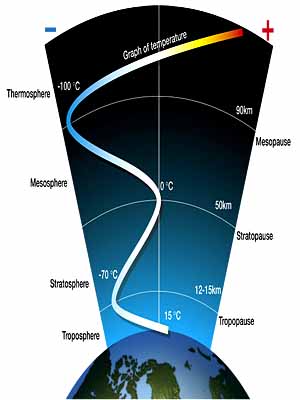| . |  |
. |
 Freezing Out The Ozone Layer
Freezing Out The Ozone Layerby Fred Pearce Cambridge- February 1, 2000 - Record low air temperatures high above the Arctic this winter are set to create the northern hemisphere's largest ever ozone hole. "The system is primed for ozone destruction," says Neil Harris, head of the European Ozone Research Coordinating Unit in Cambridge. "If the cold temperatures persist into February we could see a record." The Arctic ozone hole first appeared in the mid-1990s, more than a decade after the Antarctic hole. Like its southern cousin, it forms as the Sun rises after the midwinter night. Solar radiation triggers reactions between ozone in the stratosphere and chemicals containing chlorine or bromine. These occur fastest on the surface of ice particles in clouds, which only form in the polar stratosphere at temperatures below �80 �C. "This year is most unusual. Temperatures have been consistently as low as ever recorded in the Arctic stratosphere," says Harris. "There have been polar stratospheric clouds since the end of November and we are already seeing ozone destruction." The low temperatures will fuel growing concern that climate change is amplifying the impact of ozone-destroying chemicals by cooling the stratosphere near the poles. Drew Shindell of NASA's Goddard Institute for Space Studies in New York says that during the past decade changes in the atmospheric circulation linked to climate change have strengthened a pool of cold air in the Arctic stratosphere known as the midwinter vortex. The vortex has recently become colder and longer-lasting, making the Arctic stratosphere more like its Antarctic counterpart (New Scientist, 1 May 1999, p 28). This article appeared in the January 22 issue of New Scientist New Scientist. Copyright 1999 - All rights reserved. The material on this page is provided by New Scientist and may not be published, broadcast, rewritten or redistributed without written authorization from New Scientist.
TERRADAILY.COM
|
| |||||||||
| The content herein, unless otherwise known to be public domain, are Copyright 1995-2016 - Space Media Network. All websites are published in Australia and are solely subject to Australian law and governed by Fair Use principals for news reporting and research purposes. AFP, UPI and IANS news wire stories are copyright Agence France-Presse, United Press International and Indo-Asia News Service. ESA news reports are copyright European Space Agency. All NASA sourced material is public domain. Additional copyrights may apply in whole or part to other bona fide parties. Advertising does not imply endorsement, agreement or approval of any opinions, statements or information provided by Space Media Network on any Web page published or hosted by Space Media Network. Privacy Statement All images and articles appearing on Space Media Network have been edited or digitally altered in some way. Any requests to remove copyright material will be acted upon in a timely and appropriate manner. Any attempt to extort money from Space Media Network will be ignored and reported to Australian Law Enforcement Agencies as a potential case of financial fraud involving the use of a telephonic carriage device or postal service. |